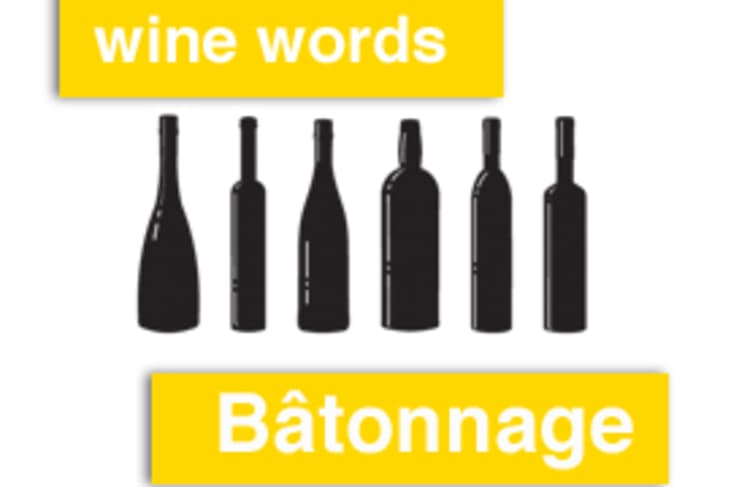Wine Words: Bâtonnage
Bâtonnage is the French word for lees stirring. As explained in my lees aging post, lees are the dead yeast cells and other particles which remain in a wine after fermentation. They settle as sediment or more of a creamy mud at the bottom of the fermentation vessel…
Lees Aging
As these dead yeast cell (lees) break down, they release all sorts of compounds such as mannoproteins, amino acids, polysaccharides and fatty acids, which interact with the fermented wine.
This interaction with the wine creates complexity, aroma and flavor compounds, palate weight and texture in a wine. While the main reasons for deliberate lees aging tend to be stylistic in nature, lees absorb oxygen, thereby reducing the risk of any unwanted oxidation of the wine and helps maintain overall wine stability.
The Role of Bâtonnage
Bâtonnage is the periodic stirring of these lees during the time the wine is being aged on its lees. Bâtonnage essentially helps redistribute all these positive lees compounds into the wine, making sure all the wine comes in contact with them. It also helps augment the lees influence.
Another important role of bâtonnage is to prevent reduction (the opposite of oxidation). Lees absorb oxygen, so lees aging prevents unwanted oxidation, as lees absorb oxygen. But you do need some oxygen. If the lees are left unstirred and gobble up all the oxygen there is a risk of reduction and the formation of unwanted reductive compoundsbsuch as hydrogen sulfide and mercaptans. These are both stinky compounds and detrimental to wine quality. Hydrogen sulfide smells of rotten egg or rotten garlic, and mercaptans smell of burnt rubber or horribly cooked cabbage. Not exactly what you want in a wine!
For the most part, wine that is being aged in a wooden barrel is less at risk of developing unwanted reductive compounds, as there is always some oxygen passage through the wood. However, for wines stored in stainless steel or other inert vessels, bâtonnage is an important part of the lees aging program to ensure that the wine stays in good condition, until the lees are racked off and the wine is bottled.
Red wines are usually racked off their lees earlier than white wines, though not always. It is a common practice to deliberately leave many white wines in contact with the lees for an extended period of time after fermentation. This is called lees aging.
Lees aging and especially bâtonnage is common practice for White Burgundy and other Chardonnay wines.
(Image: Underlying image by Olga Sadovnikova/Shutterstock)
